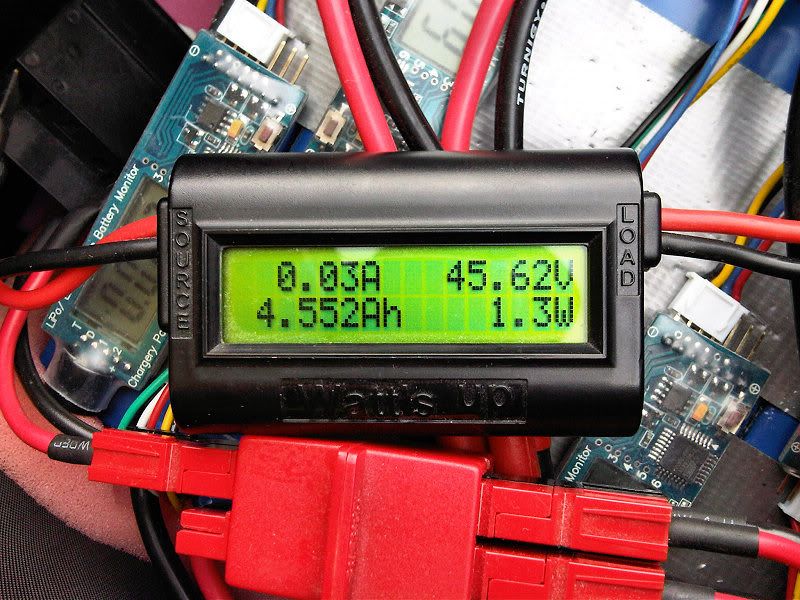I've been watching the power pushed in during charging and taken out during riding of my E-brompton with A123 battery pack.
I've got a Turnigy power analyser placed in the circuit to measure it.
I was expecting to see total power fed in to be roughly the same, or a little higher than power out - to account for losses due to heat etc.
Instead I see quite consistently more power taken out than I put in! Typically I see 40 watt hours going in but 50 coming out.
I would like to think these A123 cells are magic but instead I guess I should conclude there must be some considerable inaccuracy in the measurement.
Possibilities:
The current going in is at about 1A continuous. This is quite low compared to the total range over which the meter can measure so it may be that measurements with low current are quite inaccurate.
Power out is quite bursty. The inaccuracy could be due to how the meter samples and averages power measurements over time.
Comments?, Anyone else seen similar anomalies?
I've got a Turnigy power analyser placed in the circuit to measure it.
I was expecting to see total power fed in to be roughly the same, or a little higher than power out - to account for losses due to heat etc.
Instead I see quite consistently more power taken out than I put in! Typically I see 40 watt hours going in but 50 coming out.
I would like to think these A123 cells are magic but instead I guess I should conclude there must be some considerable inaccuracy in the measurement.
Possibilities:
The current going in is at about 1A continuous. This is quite low compared to the total range over which the meter can measure so it may be that measurements with low current are quite inaccurate.
Power out is quite bursty. The inaccuracy could be due to how the meter samples and averages power measurements over time.
Comments?, Anyone else seen similar anomalies?









